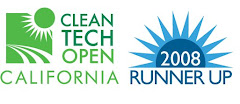 August 13th, 2009 : Rich Miller, DataCenterKnowledge.com
August 13th, 2009 : Rich Miller, DataCenterKnowledge.comSpecial thanks to Daniel Bernstein at Gaia Geo
Geothermal cooling systems haven’t been widely used in data centers. One of the first implementations we’ve come across is a new data center for American College Testing in Iowa City, Iowa that has been awarded Platinum certification in the Leadership in Energy and Environmental Design (LEED) program, a voluntary rating system for energy efficient buildings overseen by the US Green Building Council.The ACT facility becomes the first data center in the U.S. to complete LEED Platinum certification. A Citigroup data center in Germany has earned Platinum status, while Advanced Data Centers in Sacramento has been pre-certified for Platinum status.
The ACT data center opened in February 2008 and features 4,000 square feet of raised-floor data center space within an 8,000 square foot building. The facility is cooled by a geothermal “bore field” - a system of vertical holes drilled into the earth’s surface which house a closed-loop piping system filled with water and/or coolant. The cool earth allows the underground piping system serves as a heat exchanger. The ACT data center also has an exterior dry cooler as a backup to the geothermal system.
The building’s other environmentally-friendly attributes include a high performance HVAC system, 30% recycled content during construction, and numerous renewable materials used in the interior design.
“Sustainability was the name of the game for this project, both environmental sustainable design and the ability of the data center to sustain a disaster. The most gratifying aspect of the project is that none of the sustainable design strategies diminish the building’s ability to perform its primary functions,” said ACT Assistant Vice President of Central Services Tom Struve. “In fact, several of the sustainable traits actually aid in the building’s value and functionality.”
John Rath contributed to the preparation of this article.







No comments:
Post a Comment